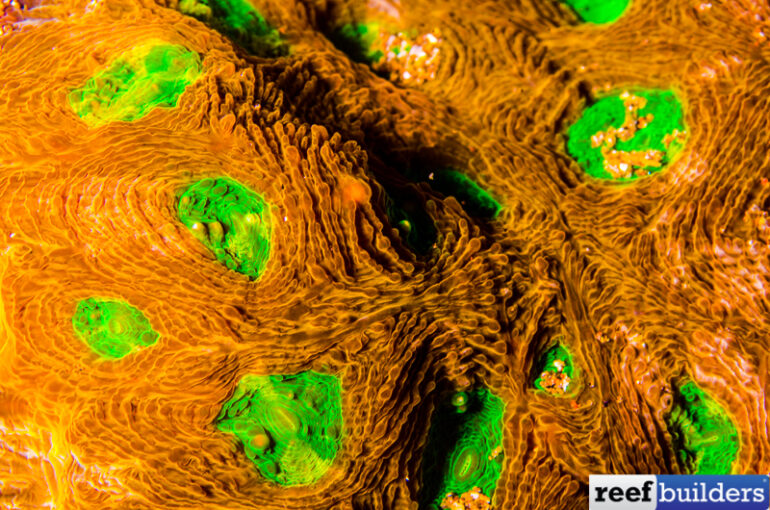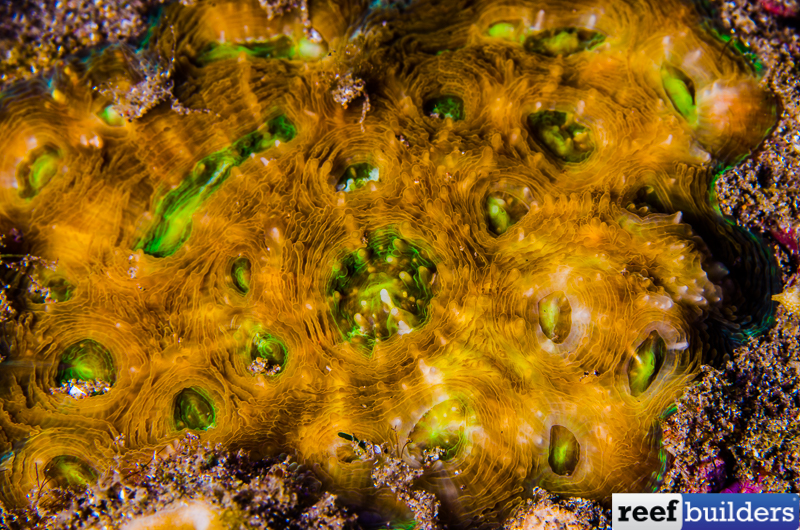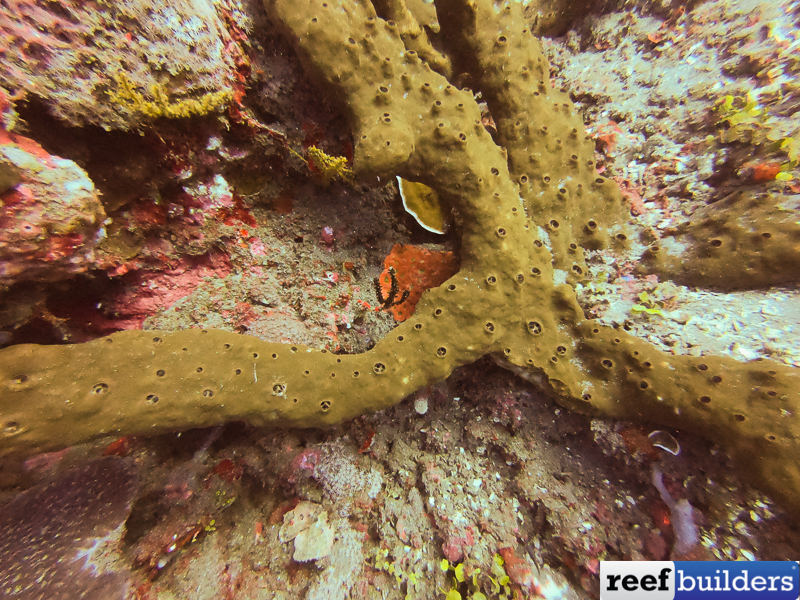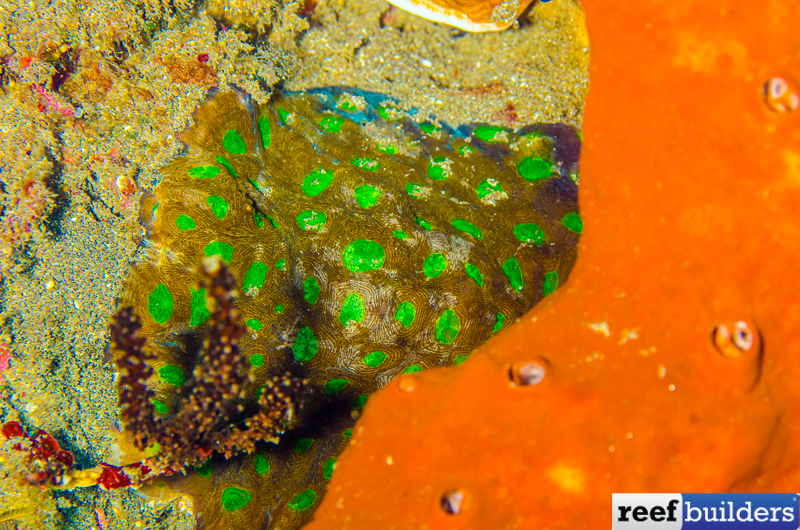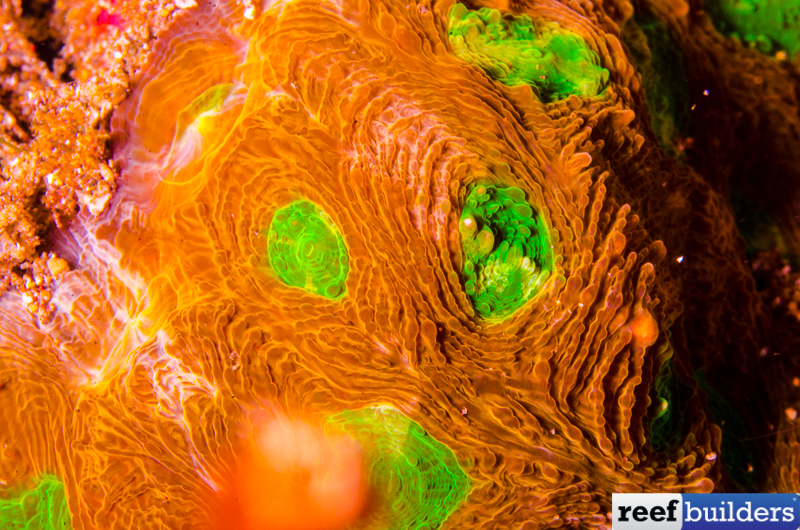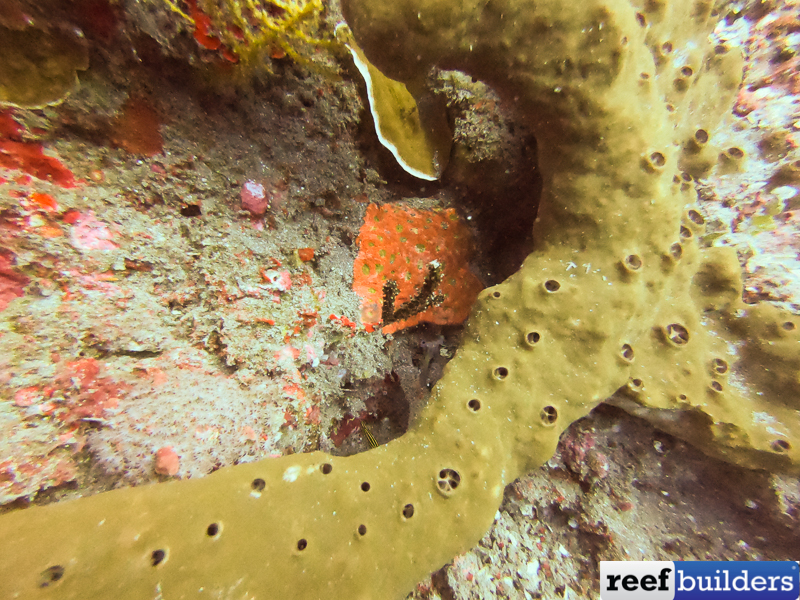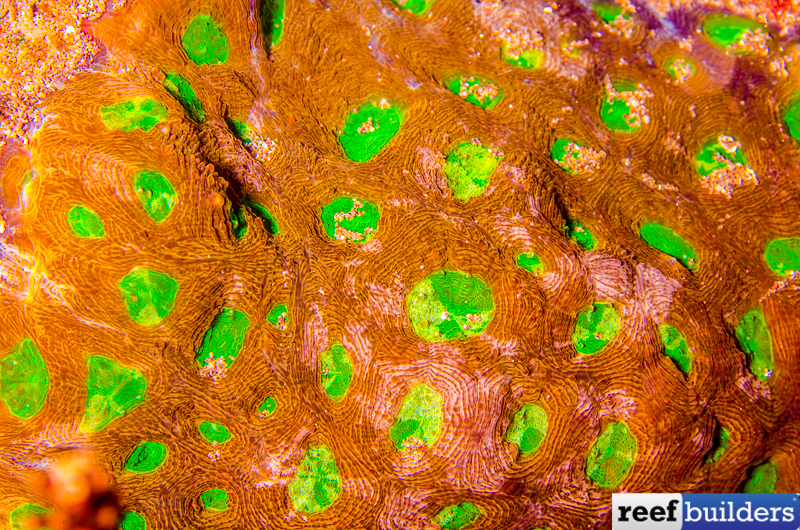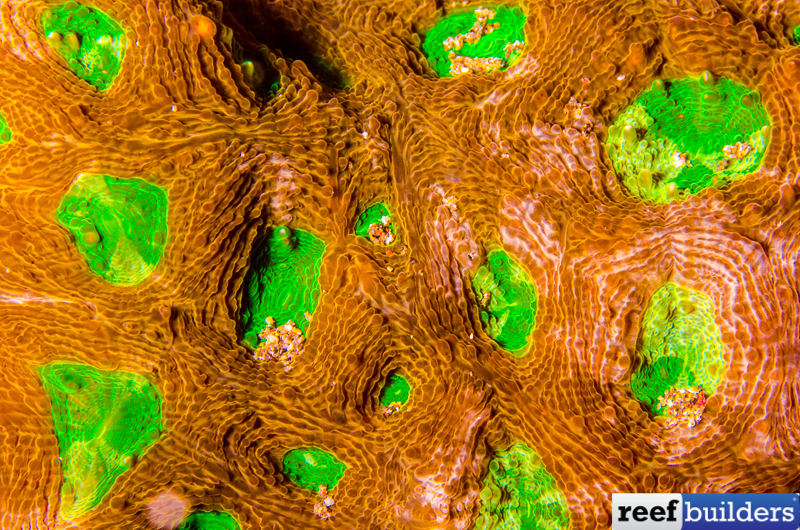The TRUE Acans, Acanthastrea echinata, used to be the norm few years back. They were abundantly shipped from Indonesia in a huge range of colors but are now very rarely found from Australia, especially in a nice gold or orange coloration. I have a dive site in Bali where they are pretty common and now that I know where to look for them, every time I dive this area I see quite a few more.
As you might expect, Acan echinata are quite secretive, somewhat cryptic and never really live in the open, plain sight. At least this is true for the orange color form, as we can find the more classic green ones on top of rocks. Instead of, the orange one prefer to live on the lower side of boulders, hidden behind, sponge or other corals so you need to dig them off. But once you know how to spot them, and you hit the right spot, you realize that they are a lot more common than previously thought.
First of all, these true Acans like reef exposed to high flow; these places can be a bit tricky to dive, and you better know how to read a tide chart. Otherwise be in really good shape and have safety surface indicator, or diving sausage if you want the boat to pick you up and not end up in the open ocean. These places with high flow are often thriving with coral and fish life with a lot of sea fans, sponges, soft corals, and hard corals lurking in between.
Usually with high flow, comes numerous, smaller back eddies. If you’re diving places like this when the current picks up, you have to realize that your only way against it, is to literally seek shelter behind each rock formation, jumping from one rock to another. And here you go, behind many of this rock where the flow slows down, food and larvae concentrate.
If you dig a little you find these beautiful jewels. So here in a place where food is plentiful they prefer to stay on vertical surfaces, on boulder sides, crevices, hidden under a layer of other corals.
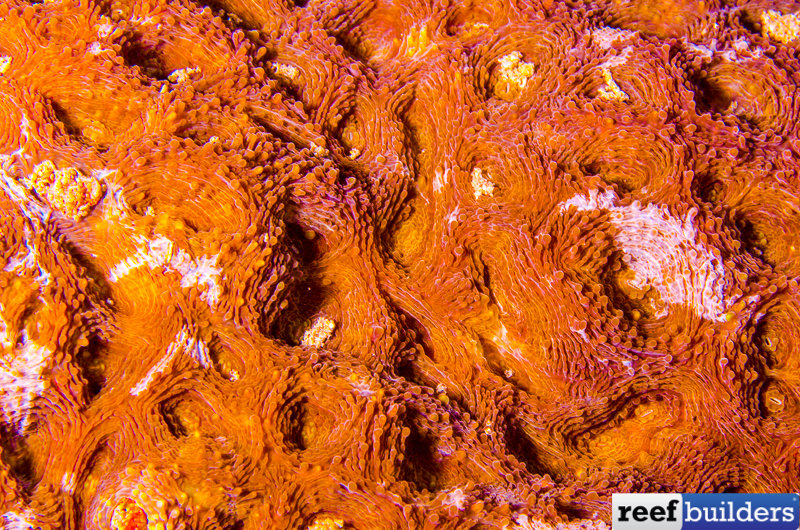
Food is of prime importance for these corals, flow will need to be strong but indirect, and light will not need to be very intense. If provided with these basics, these Acan are a real good LPS aquarium candidate since it’s usually a very forgiving coral, that grows pretty fast. There are quite a few still growing in coral farms around the world, the price is quite high at the moment, but really worth every penny of it!


